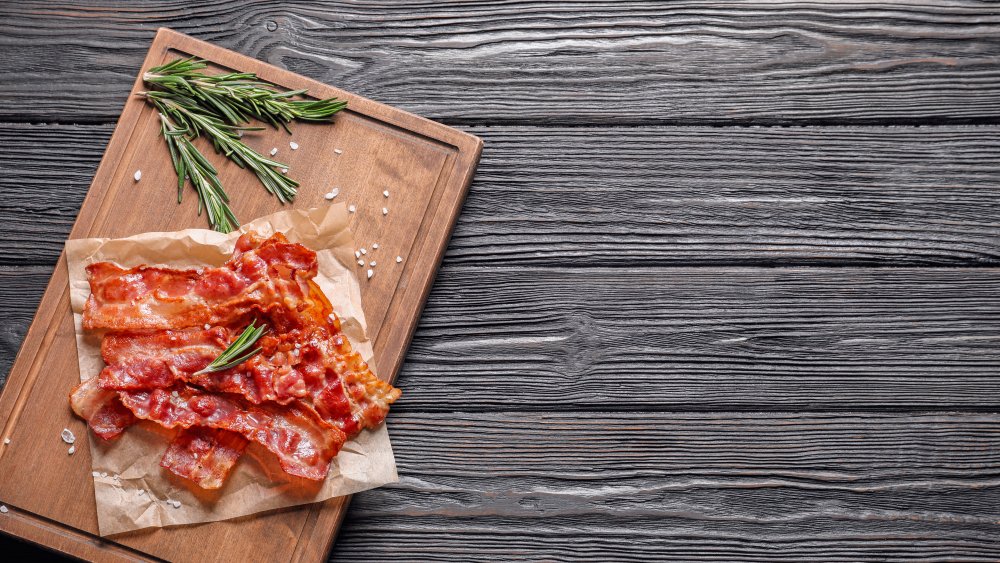The Unique Way Anthony Bourdain Prepared Bacon
Through books like Kitchen Confidential, Medium Raw, and Appetites, Anthony Bourdain gave us some pretty great life advice. Never use a garlic press, unless you're content with mangling your beloved cloves. Don't fool yourself into thinking that a butter substitute will have the same culinary value as butter itself. And please, never fry bacon while naked.
While that last piece of advice sounds more like a punchline than a proverb, Bourdain had a point.
That's (partially) why Bourdain chose to cook his bacon in the oven, rather than on the stovetop, according to Fresh Air. During the 2017 interview, Bourdain explained to host Dave Davies that he was more than happy to avoid direct contact with hot, splattering bacon grease. Besides, there's room for many mistakes when you're cooking bacon on a stovetop: You can end up with burnt, overcooked, or sadly floppy bacon, not to mention burnt arms and hands. Who wants any of that? (via HuffPost)
In defense of oven-roasted bacon
During Bourdain's decades-long food career, the restaurants he worked for chose to toss bacon into the oven, rather than onto a griddle. In restaurants, Bourdain or his co-workers usually positioned the bacon on baking parchment and slipped it into the oven, he told Fresh Air. This method required some patience, Bourdain said, noting that it was necessary to check on the bacon and turn the pan around to ensure even cooking. But, at the end of the day, it yielded a better result: evenly-cooked, crispy bacon.
After all, kitchen cooks are often stuck preparing many meals at once, and who wants a loud, sizzling mess of bacon distracting the whole staff during the God-awful brunch shift? (Oh yeah, Bourdain hated brunch, too.)
Bourdain, as usual, was onto something when he told Davies about his oven-roasting method. According to Bon Appétit, bacon will be crispy and decadent after 15 minutes in a 375 degree oven. Plus, lining a pan with foil or parchment will make things a lot less messy. Another pro tip? Save the bacon fat, and use it to flavor pasta sauces, salad dressings, and roasted vegetables (via Bon Appétit).

